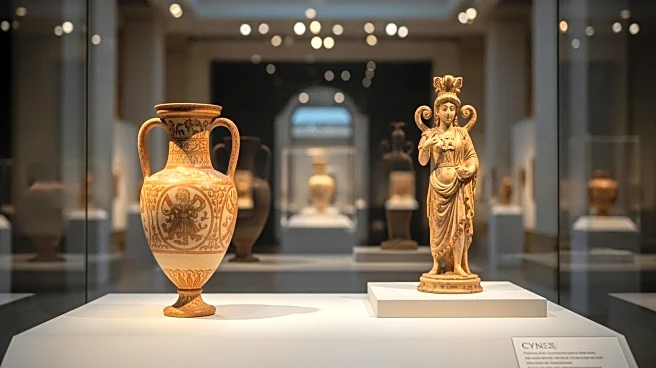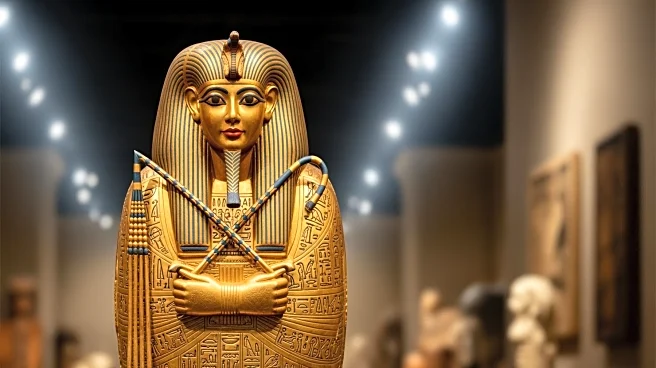What's Happening?
The John and Mable Ringling Museum of Art in Sarasota, Florida, is unveiling its first permanent ancient-art gallery, featuring a significant collection of Cypriot art. This collection, acquired by John Ringling in 1928
from the Metropolitan Museum of Art, includes around 3,300 pieces of ancient Mediterranean art. The museum's collection is the third-largest of its kind in North America, following the Met and the Penn Museum in Philadelphia. The gallery's opening marks the culmination of a decade-long effort involving conservation, reinterpretation, and research to contextualize the history of these objects, which date back to the Early Bronze Age. The exhibition includes rare and unique pieces, such as limestone statues and silver jewelry, and aims to offer a new perspective on ancient art by showcasing how it would have been experienced historically.
Why It's Important?
The opening of the permanent ancient-art gallery at the Ringling Museum is significant for several reasons. It enhances the cultural landscape of Florida by providing access to rare and historically important artifacts, thus enriching public understanding of ancient Mediterranean civilizations. The exhibition also highlights the importance of Cyprus as a historical hub of trade and cultural exchange, reflecting influences from various regions such as Egypt, the Aegean, and Persia. This initiative not only preserves valuable art but also promotes cultural diversity and historical education, offering lessons in innovation and creativity from ancient Cypriot artists. The gallery's opening is a testament to the museum's commitment to expanding its offerings and providing new insights into ancient art.
What's Next?
The Ringling Museum plans to periodically rotate objects within the gallery, reflecting the Cypriot practice of burying votive offerings to make space for new tributes. This approach will keep the exhibition dynamic and allow visitors to experience different aspects of Cypriot art over time. The museum's curators will continue to explore and retrace the steps of Luigi Palma di Cesnola, the original collector of many of these artifacts, to uncover more historical context and stories behind the pieces. This ongoing research and exhibition strategy will likely attract scholars, historians, and art enthusiasts, fostering a deeper appreciation for ancient Mediterranean cultures.
Beyond the Headlines
The exhibition at the Ringling Museum not only showcases ancient art but also raises questions about the ethics of art collection and the historical narratives constructed around these artifacts. The story of Luigi Palma di Cesnola, who collected these objects without formal archaeological training, highlights the complexities of art acquisition and the importance of accurate historical documentation. The exhibition encourages visitors to consider the broader implications of cultural exchange and the role of museums in preserving and interpreting history. It also serves as a reminder of the interconnectedness of ancient civilizations and the enduring impact of their artistic contributions.














